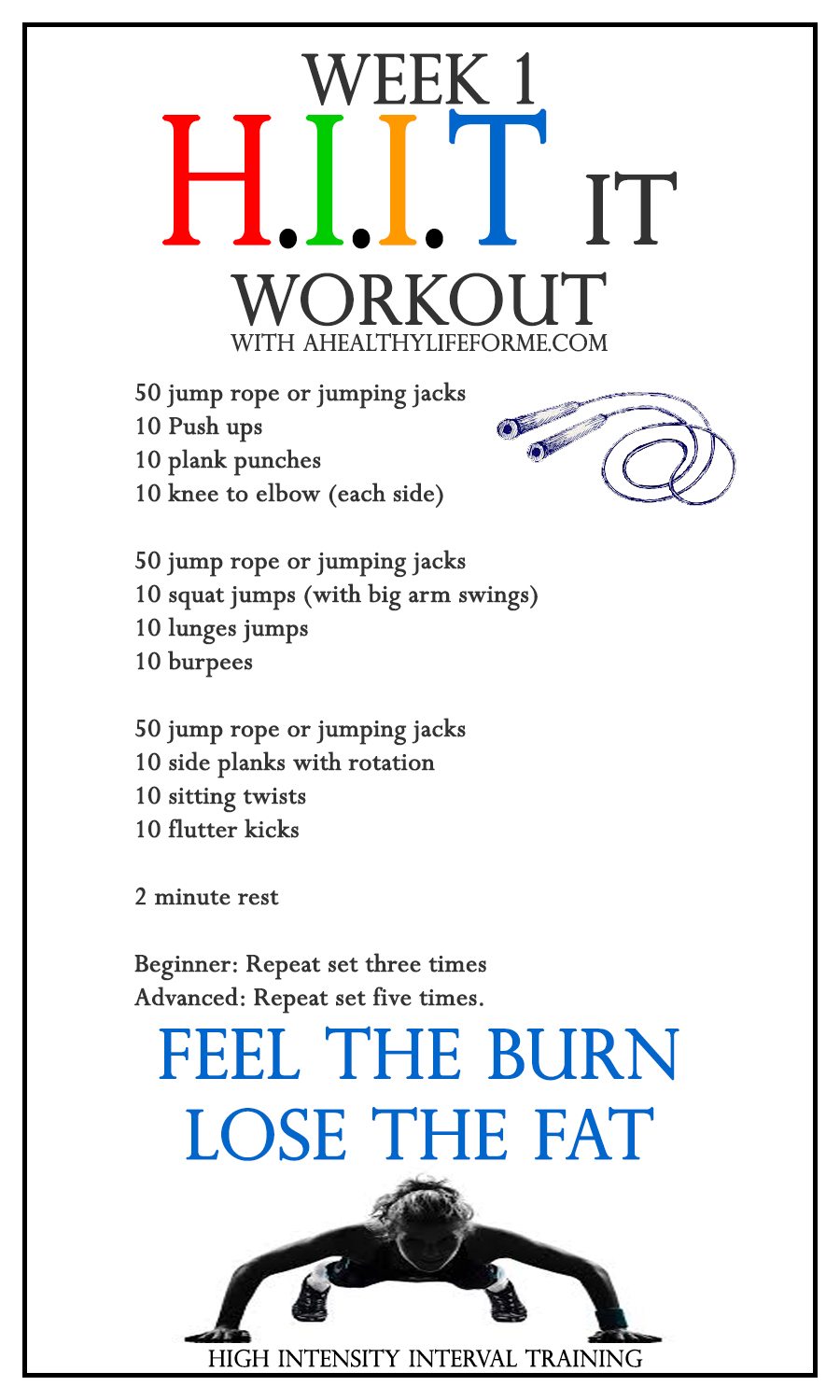Rise by Six: Your Daily Dose of Inspiration
Explore insights and stories that elevate your day.
Sweat Like You Mean It: HIIT for Life
Unlock your ultimate fitness potential with HIIT! Sweat hard, burn calories, and transform your life with energizing workouts. Dive in now!
The Science Behind HIIT: Why It Works for Everyone
High-Intensity Interval Training (HIIT) has garnered significant attention in the fitness world due to its scientifically-backed efficacy for individuals of varying fitness levels. The principle behind HIIT is simple yet powerful: short bursts of intense exercise followed by brief periods of rest or lower-intensity workouts. Research shows that this approach not only maximizes calorie burn during workouts but also enhances the body's ability to continue burning calories long after the session ends, a phenomenon known as excess post-exercise oxygen consumption (EPOC). This makes HIIT an efficient option for those looking to lose weight and improve cardiovascular health in a shorter time frame.
One of the reasons HIIT works for everyone lies in its adaptability. Individuals can modify the intensity and duration of the intervals based on their personal fitness levels, making it inclusive for novices and seasoned athletes alike. Moreover, studies suggest that HIIT can improve metabolic health, increase insulin sensitivity, and enhance endurance. By incorporating a range of exercises, from sprints to bodyweight movements, HIIT not only keeps workouts engaging but also promotes overall physical fitness. This versatility is what allows it to transcend age and experience, proving that everyone can benefit from this dynamic training method.

10 Essential Tips for Maximizing Your HIIT Workouts
High-Intensity Interval Training (HIIT) is a powerful method for burning calories and improving cardiovascular fitness. To maximize your HIIT workouts, begin by setting clear goals. Whether you want to lose weight, build muscle, or enhance endurance, having specific objectives will keep you motivated. Incorporate varied intervals by alternating between intense bursts of exercise and moderate recovery periods. For example, you might sprint for 30 seconds followed by a 1-minute walk. This variation not only helps maintain your interest but also challenges your body, promoting further adaptation and progress.
Don't forget the importance of proper form during your HIIT sessions. Prioritize executing each movement correctly to prevent injuries and gain the most benefit. In addition, incorporating strength training can enhance your HIIT performance. Aim for a balanced routine consisting of both cardio and strength components. Lastly, listen to your body; if you feel overly fatigued, consider taking a rest day or adjusting the intensity. By following these tips, you'll ensure that each session is effective, safe, and enjoyable, keeping you on the path to achieving your fitness goals.
Is HIIT Right for You? Understanding the Benefits and Risks
High-Intensity Interval Training, commonly known as HIIT, has gained immense popularity in recent years for its potential to deliver maximum results in minimal time. This training style typically involves short bursts of intense exercise alternated with low-intensity recovery periods. Some of the key benefits of HIIT include improved cardiovascular health, enhanced metabolism, and significant fat loss. Furthermore, HIIT can be tailored to fit various fitness levels and can be performed virtually anywhere, making it an accessible option for many individuals looking to improve their fitness. However, not everyone may find this type of training suitable for their needs.
While HIIT can offer substantial benefits, it also comes with certain risks that should be considered. The intensity of the workouts can lead to a higher likelihood of injury, particularly for those who may not be accustomed to rigorous exercise or who have pre-existing health conditions. Additionally, the demanding nature of HIIT can cause excessive fatigue and may not be ideal for individuals seeking a more moderate approach to fitness. It's essential to listen to your body and consult with a healthcare professional before starting a HIIT regimen. Ultimately, the decision of whether HIIT is right for you depends on your personal fitness goals, current health status, and exercise preferences.